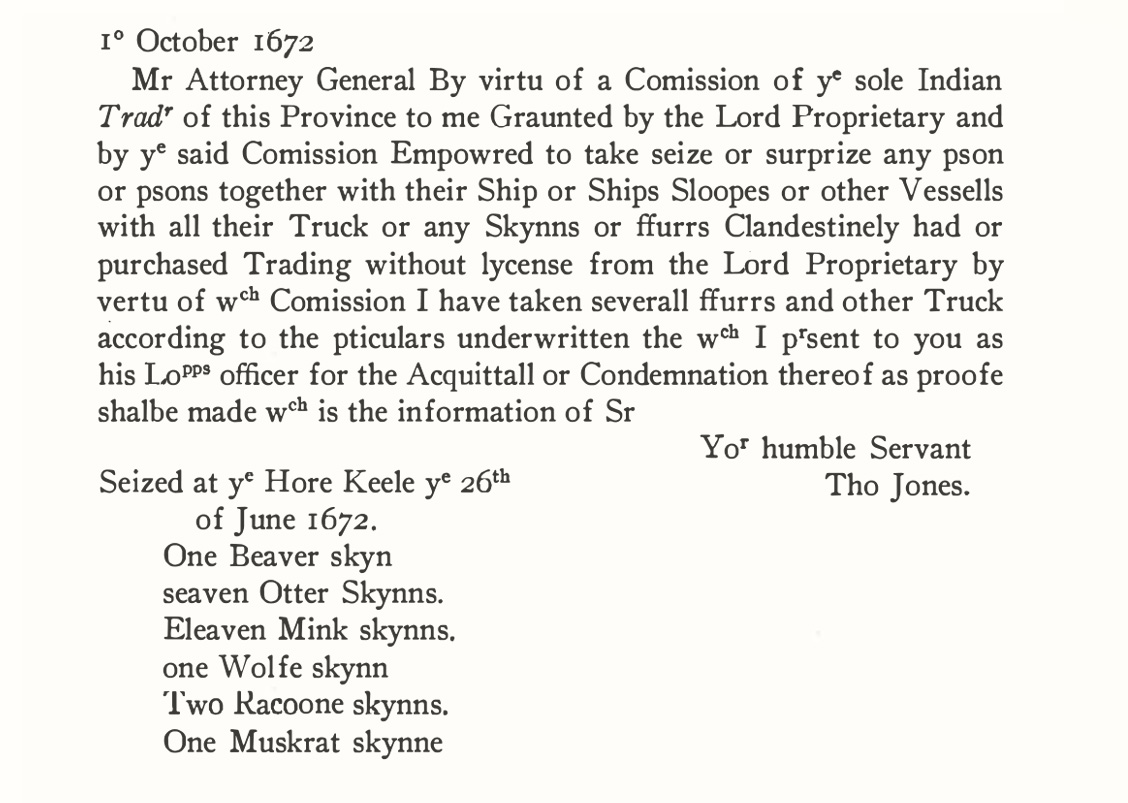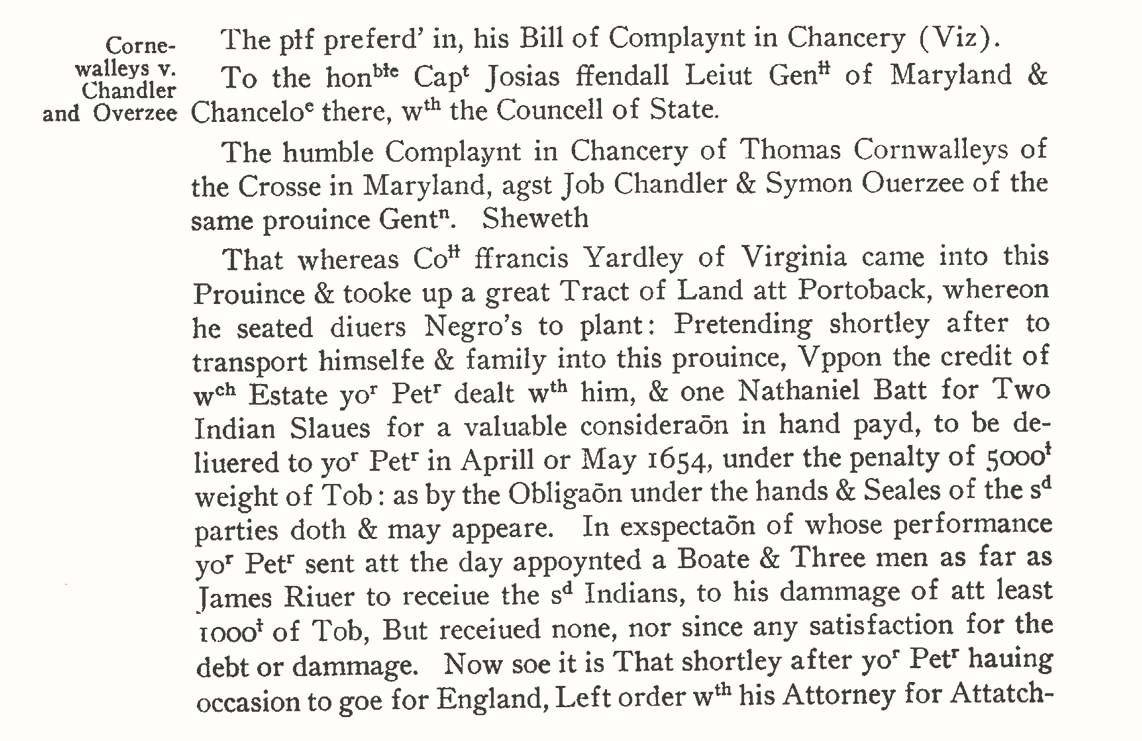Elementary and Secondary Examples
Elementary Students
Here is an example of a primary source analysis that might be made at the upper elementary level:
This source is from the kit, Elementary and Up Topic 8: Maryland's Fur Trade and Fauna Along the Chesapeake Bay.

Teacher’s Note
Modification for Younger Students
Much of the language in the Maryland State Archives documents is too advanced for lower elementary students. For these younger children, the “Observe, Reflect, Question” exercise becomes “See, Think, Wonder.”
Younger students can be pre-taught one or two essential terms (like “seize”) and coached to find the information that is familiar to them (the list of animals). Help students to contextualize sources. For example, you might want to share information about “Indian traders” before examining this source and others in this kit.
Secondary Students
The Observe-Reflect-Question model can be used for older students. Below is a example of what a secondary-level primary source analysis could look like. This analysis examines a source from Secondary Topic 3: Three Cultures: Indigenous People, European Colonists, and African Americans in Maryland. Secondary students will be able to take this exercise further and stay more focused on the goal of questioning Indigenous people’s presence in these records and stories.

Teacher’s Note










